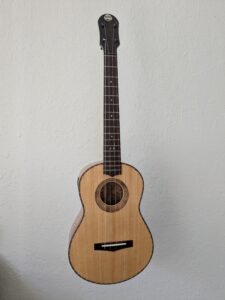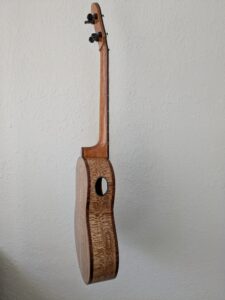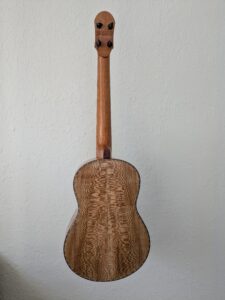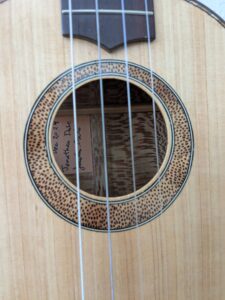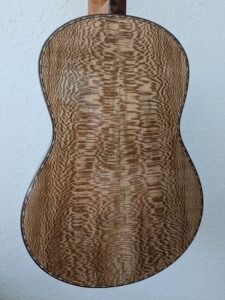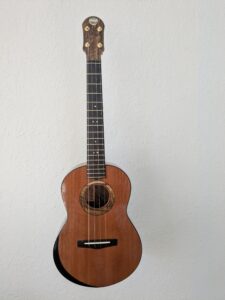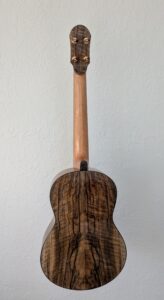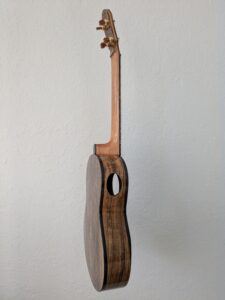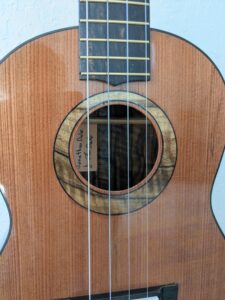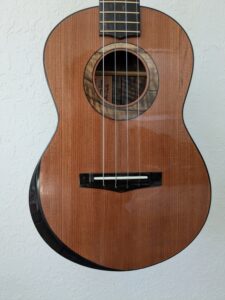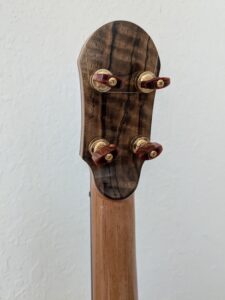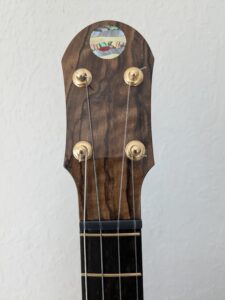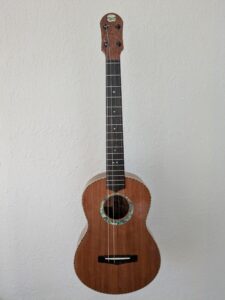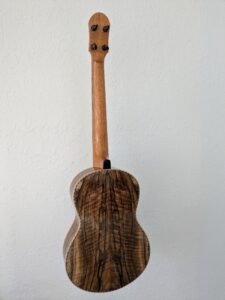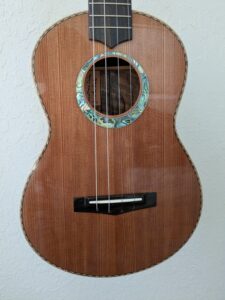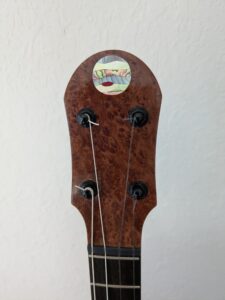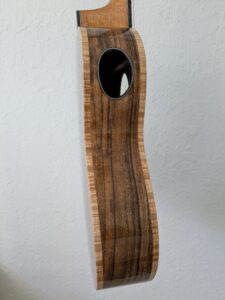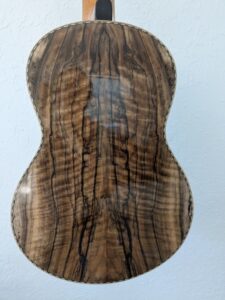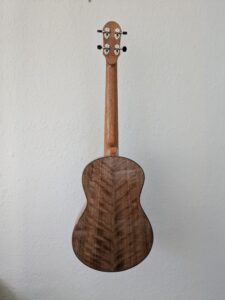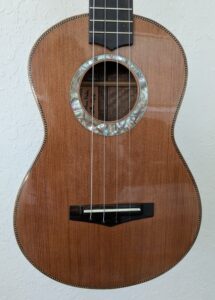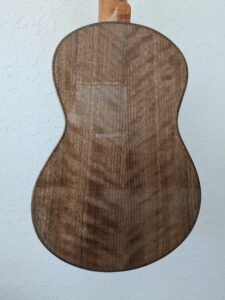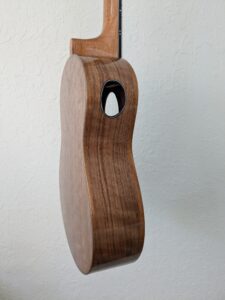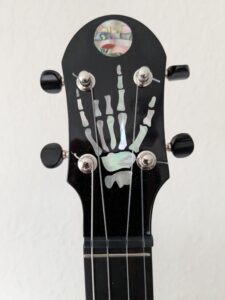(click on any picture to see full size)
I usually build in sets of three or four. All four of these were commissions. I build commissions in the order in which they came in, and all of these ended up being baritones. (Baritones seems to be having a surge in popularity)
#126 This is Pennsylvania sycamore that I cut from a tree a number of years ago. It is paired with what I call a Pennsylvania red cedar top. I believe that this is the western red cedar grown in Pennsylvania as a landscape tree. This tree was already down when I got to cut it up so I did not have any branches/needles to look at, but the bark matches the western red cedar. The rosette is a new thing for me. This is made from a cross sections of a royal palm from across the street that was killed by a lightning strike. Katalox fingerboard on a mahogany neck and quilted sapele binding.
#127 – This baritone has a slightly shorter scale length, 19 inches, than my standard baritone scale of 20.5 inches. The customer wanted a fingerboard closer to the tenor they also play. They chose some English walnut that was grown in Pennsylvania with a redwood top. The customer also wanted things rather under-stated so there is simeple black binding, a single black purfling line around the rosette and sound port, and the rosette, headplate and backstrap are from the same English walnut. There is a black arm bevel. Ebony fingerboard on a Spanish cedar neck.
#128 – This customer also selected the same English walnut for back and sides. It is also paired with a redwood top though there is a bit more ‘bling’. Curly maple binding, black & white diagonal purfling, redwood burl headplate, and a paua abalone pearl rosette. Ebony fingerboard on a mahogany neck.
#129 This baritone has curly black walnut back and sides with a redwood top. Pink abalone rosette, black and white ‘rope’ purfling, ebony fingerboard on a mahogany neck and ebony headplate. The inlay done in red sea snail pearl is a skeleton hand of the sign language ‘I Love You’.
